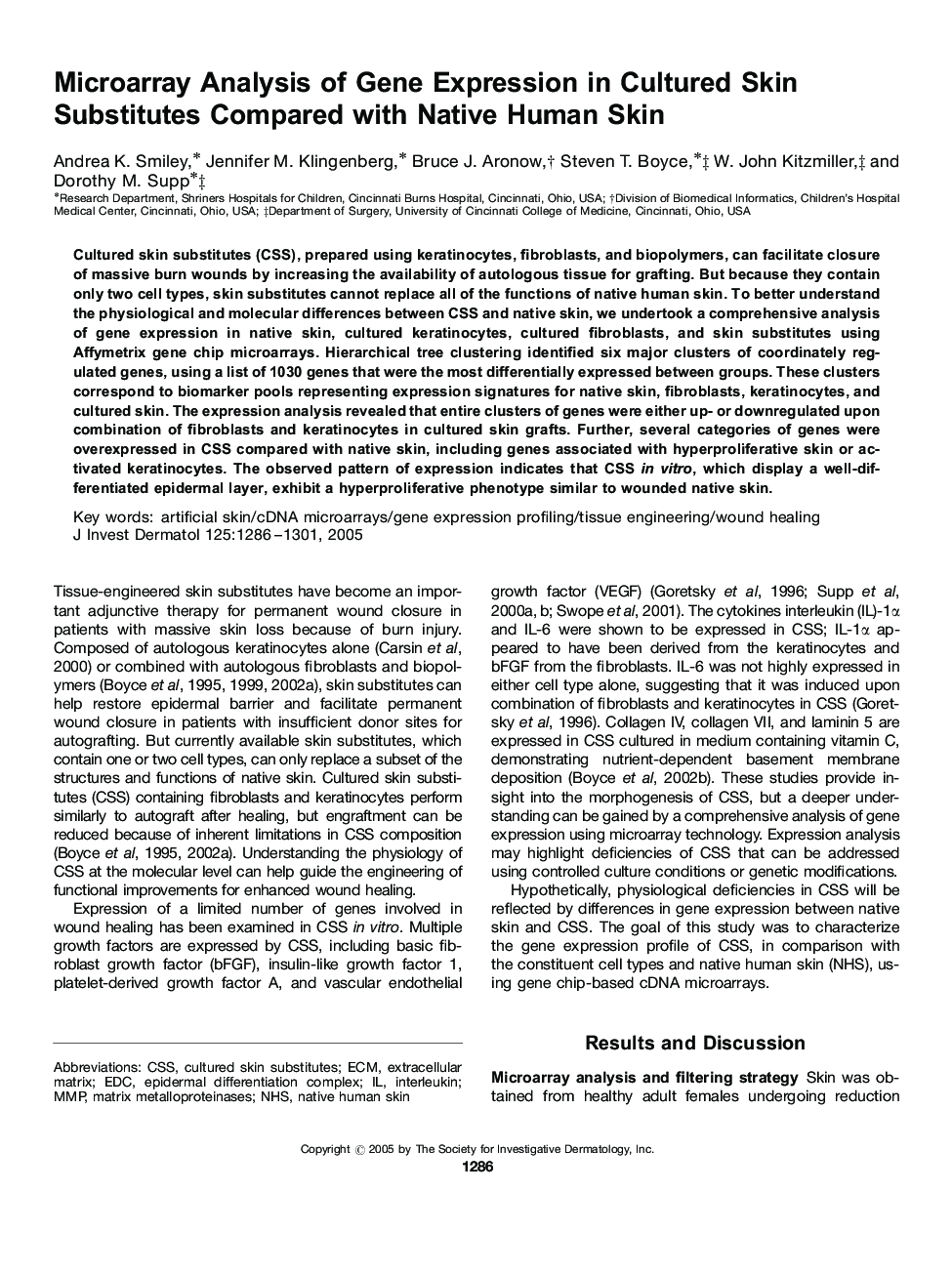| Article ID | Journal | Published Year | Pages | File Type |
|---|---|---|---|---|
| 9230120 | Journal of Investigative Dermatology | 2005 | 16 Pages |
Abstract
Cultured skin substitutes (CSS), prepared using keratinocytes, fibroblasts, and biopolymers, can facilitate closure of massive burn wounds by increasing the availability of autologous tissue for grafting. But because they contain only two cell types, skin substitutes cannot replace all of the functions of native human skin. To better understand the physiological and molecular differences between CSS and native skin, we undertook a comprehensive analysis of gene expression in native skin, cultured keratinocytes, cultured fibroblasts, and skin substitutes using Affymetrix gene chip microarrays. Hierarchical tree clustering identified six major clusters of coordinately regulated genes, using a list of 1030 genes that were the most differentially expressed between groups. These clusters correspond to biomarker pools representing expression signatures for native skin, fibroblasts, keratinocytes, and cultured skin. The expression analysis revealed that entire clusters of genes were either up- or downregulated upon combination of fibroblasts and keratinocytes in cultured skin grafts. Further, several categories of genes were overexpressed in CSS compared with native skin, including genes associated with hyperproliferative skin or activated keratinocytes. The observed pattern of expression indicates that CSS in vitro, which display a well-differentiated epidermal layer, exhibit a hyperproliferative phenotype similar to wounded native skin.
Related Topics
Health Sciences
Medicine and Dentistry
Dermatology
Authors
Andrea K. Smiley, Jennifer M. Klingenberg, Bruce J. Aronow, Steven T. Boyce, WJohn Kitzmiller, Dorothy M. Supp,
